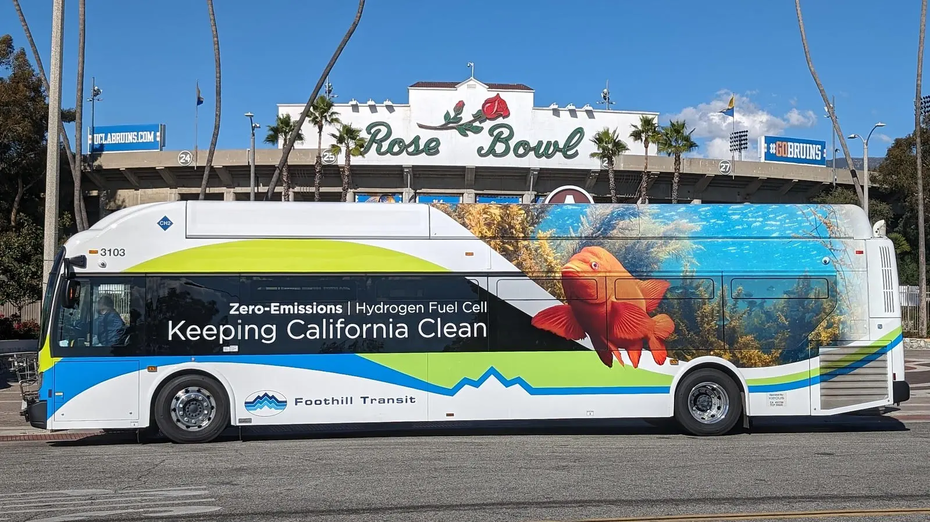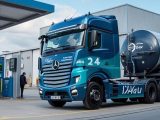
Hydrogen Fuel Cell Buses Propel Pasadena’s Zero-Emission Transit Revolution
September 1, 2025Imagine cruising through Pasadena on a crisp morning as the sun glints off sleek, whisper-quiet buses. This isn’t some futuristic daydream—it’s the new norm for Pasadena Transit. On August 25, 2025, the city green-lit a $32 million deal with New Flyer of America Inc., bringing in 17 shiny Hydrogen Fuel Cell Buses. They’ll swap out the old natural–gas models and skyrocket the city’s Zero-Emission Transit share from a modest 2% up to 46% by spring 2027. And yes, almost half the fleet will be running on hydrogen in under two years, steering Pasadena toward cleaner air and quieter streets.
Leading the Charge Toward Zero Emissions
Under Mayor Victor Gordo’s leadership, Pasadena has fast-tracked its goal of a carbon-free municipal fleet by 2030 and plans to meet California’s Innovative Clean Transit rule three years early in 2037. Transportation Director Joaquin Siques laid out the numbers—reliability, range, and lifecycle costs—to prove these hydrogen-powered buses are more than a shiny upgrade. They’re a bulletproof solution for busy routes where on-time performance and low downtime really matter. It’s proof that bold vision paired with hard facts can push Zero-Emission Transit forward.
Why Hydrogen? Range, Refueling, Reliability
We’ve all seen battery-electric buses tied up for hours and still struggle to wrap up a full day’s service. Enter hydrogen. Thanks to our Hydrogen Fuel Cell Buses, one quick fill-up gives you over 300 miles of range in under 20 minutes—about the time it takes to grab a latte. During pilot tests, these buses outperformed expectations, showing you’d need to double Pasadena’s battery fleet just to keep pace on peak days. Couple that with robust Hydrogen Refueling Infrastructure, and you’ve got a transit solution that keeps rolling without missing a beat.
Power in Partnership: Funding & Infrastructure
This isn’t a solo act—Pasadena has already locked down over $100 million in state and federal grants to build a dedicated hydrogen fueling station and a state-of-the-art operations & maintenance hub by 2028. That means more than two-thirds of the cost is covered by outside funding, so local taxpayers can relax. Councilmembers Gene Masuda and Steve Madison applauded the savvy use of grants, while Rick Cole voiced concerns about upstream emissions and long-term expenses. In the end, the majority decided the benefits outweigh the risks.
Community Impact & Future Outlook
Let’s crunch the numbers: Pasadena Transit serves roughly 135,700 people, and about 80% of riders rely on it as their only way to get around. Swapping in 17 zero-emission buses will shave over 1,200 tonnes of CO₂ every year and clear the air in neighborhoods long weighed down by diesel fumes. It’s a win–win—cutting pollution and boosting social equity by making clean, reliable rides accessible to everyone.
And Pasadena isn’t hitting the brakes after this first rollout. By 2028, nearly half the entire fleet will switch to electric power—mixing hydrogen fuel cell and battery-electric buses, with battery models handling paratransit. This phased approach gives us a sneak peek at the future of urban mobility: flexible, scalable, and fuel-agnostic. Cities like Melbourne, London, and Tokyo are already tuning in as Pasadena sets the bar for mid-sized cities worldwide.
Sure, hydrogen has its critics—its green creds hinge on how the gas is produced, and building new infrastructure takes time. But challenges are exactly why innovation exists. With clear vision, smart financing, and strong community backing, Pasadena is proving that Zero-Emission Transit isn’t just a pipe dream. It’s rolling down our streets right now and serving as a blueprint for cities everywhere eager to reimagine public transportation.



 With over 15 years of reporting hydrogen news, we are your premier source for the latest updates and insights in hydrogen and renewable energy.
With over 15 years of reporting hydrogen news, we are your premier source for the latest updates and insights in hydrogen and renewable energy.